There are many things to consider when deciding which dog breeds have the best health. Size, genetics, nutrition and general care and training should all be taken into account. That said, there are a few breeds that tend to stand out as having very little health problems. Using statistics from the Orthopedic Foundation for Animals and other sources, we’ve gathered a list of what breeds seem to be the healthiest. Remember that no breed is free of health problems and no statistical database is without its flaws. That said, this list should give you a general idea of good options if you’re looking for a healthy companion. They are listed in no particular order.
#1 – Shiba Inu

The Shiba Inu is a relatively healthy breed originating from Japan. It’s the smallest of the Japanese breeds and, although independent and stubborn, makes an excellent companion. Canine hip dysplasia and certain eye problems occasionally show up in the breed, but have been significantly decreased through careful breeding. In fact, according to OFA’s database, only 5.6% of all Shibas tested were dysplatic.
#2 – German Shorthair Pointer
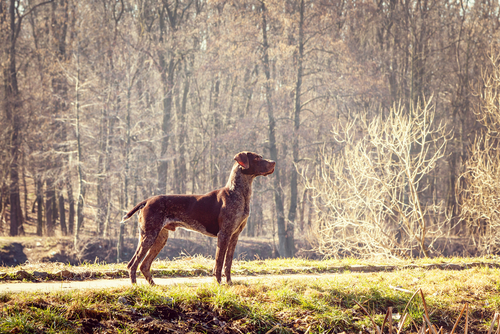
One of the many sporting breeds, the German Shorthaired Pointer has remained relatively healthy and the breed’s enthusiasts hope to keep it that way. Although they can be prone to genetic hip and elbow dysplasia and eye disorders, breeders test their dogs and work hard to produce healthy animals. According to OFA’s databases, 96% of dogs tested had healthy hips and 99% had healthy elbows.
#3 – Siberian Husky
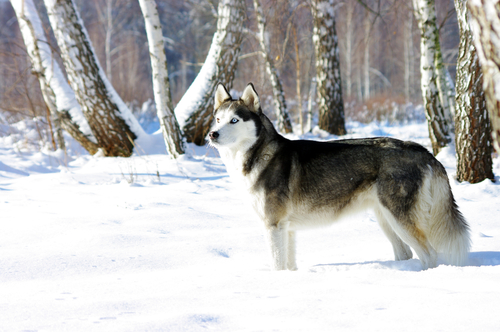
Siberian Huskies are a very active breed that has been used to pull sleds across the Siberian tundra for hundreds of years. In a recent DNA study, the breed was found to be one of the most ancient purebreds still in existence today. Although the breed is prone to genetic epilepsy and eye disorders, they are almost completely free of hip dysplasia, with 98% of tested dogs showing healthy hips.
#4 – Greyhound

The Greyhound is an ancient breed that has stayed relatively free of most genetic health issues found in dogs. Orthopedic conditions such as hip and elbow dysplasia are almost non-existent in the breed. A genetic condition known as Greyhound Neuropathy can be found in the conformation-bred dogs, but not in the racing bloodlines. This disease interferes with nerve impulse transitions and is fatal, but can be tested to ensure that no litters are born with affected puppies. Like all sighthounds, Greyhounds are especially sensitive to barbiturate anesthetics.
#5 – Canaan Dog

The Canaan Dog is a very hardy breed that relatively free of hereditary health issues. It is an ancient breed that has been used as a herding dog for thousands of years in what is now modern Israel-Palestine. Though semi-feral at that time, the breed’s modern founders developed them to become excellent human companions and to work alongside them detecting mines.
#6 – Ibizan Hound
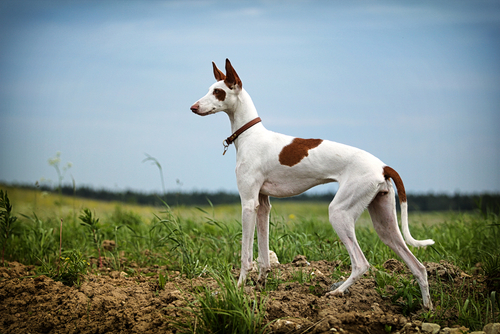
The Ibizan Hound suffers from few hereditary diseases, as is relatively common for sighthounds. That said, the Spanish breed does have a higher incidence of autoimmune thyroiditis, the leading cause of hypothyroidism in dogs, than other sighthounds. Eyes should also be checked before breeding as they can suffer from certain disorders. Other concerns are epilepsy and allergies, but the incidence is rather low. Like all sighthounds, they are especially sensitive to barbiturate anesthetics.
#7 – Pharaoh Hound

This ancient breed is still somewhat rare outside of its Maltese Islands home and therefore suffers very few genetic health problems. Conscious breeding among enthusiasts has brought them to be virtually free of the many genetic health problems that plague other breeds today, although they can still be affected. Like all sighthounds, they are especially sensitive to barbiturate anesthetics.
#8 – Brittany
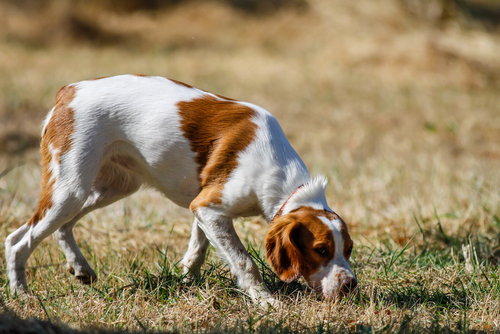
The Brittany is probably the healthiest of the spaniels, with few dogs being affected by allergies and ear infections. Although OFA’s database shows hip dysplasia was present at 14.3% from 1974-2014, the rate dropped to an average of 8.6% from 2006-2010, showing a vast improvement.
#9 – Belgian Malinois

The Belgian Malinois is probably the most versatile working dog today, working in a variety of jobs and competing in a wide range of sports as well. Although the breed still suffers from inherited eye disorders, epilepsy and hip dysplasia, the incidences are very low compared to other breeds and are getting considerably lower. According to OFA’s database, only 5.3% of tested dogs were affected by hip dysplasia.
#10 – Whippet
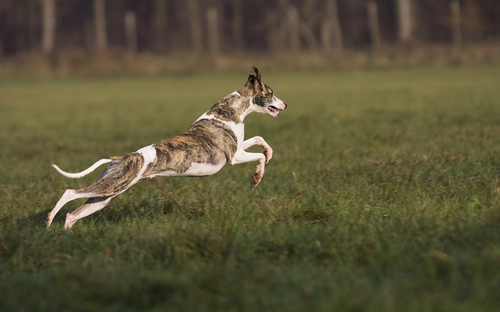
Like its sighthound cousins, the Whippet has remained relatively free of genetic health issues and are one of the healthiest purebred dogs. While hip and elbow dysplasia are almost non-existent, eye disorders and hypothyroidism can be found. Like all sighthounds, Whippets are especially sensitive to barbiturate anesthetics.
